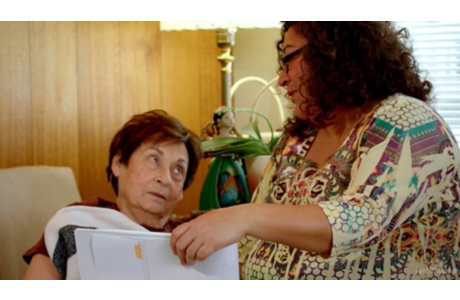Caregiving: Foot and Toenail Care
Overview
Checking a person's feet and keeping them clean and soft can help prevent cracks and infection in the skin. This is especially important for people who have diabetes. Keeping toenails trimmed—and polished if that's what the person likes—also helps the person.
If the person you care for has diabetes or has foot problems, such as bad bunions and corns, think about taking them to see a podiatrist. This is a doctor who specializes in the care of the feet. Sometimes a podiatrist will come to the home if the person can't go out for visits.
You can do basic nail care at home. Usually all you need to do is keep the nails clean and at a safe length.
Trimming toenails
Try to trim the person's nails regularly. Check the nails each week to see if they need to be trimmed. It's easiest to trim nails after the person has had a shower or foot bath. It makes the nails softer and easier to trim.
Start by gathering your supplies. You will need toenail clippers and a nail file. You may also need nail polish and nail polish remover.
To trim the nails:
- Wash and dry your hands. You don't need to wear gloves.
- Use nail polish remover to take off any polish.
- Hold the person's foot and toe steady with one hand while you trim the nail with your other hand. Trim the nails straight across. Leave the nails a little longer at the corners so that the sharp ends don't cut into the skin.
- Keep the nails no longer than the tip of the toes.
- Let the nails dry if they are still damp and soft.
- Use a nail file to gently smooth the edges of the nails, especially at the corners. They may be sharp after the nails are cut straight.
- Apply nail polish, if the person wants it.
If the person's nails are thick and discolored, it may be safest to have a podiatrist cut them.
General nail and foot care
When you're caring for someone's nails, it is important to remember not to trim or cut the cuticles. A minor cut in a cuticle could lead to an infection. Wash the feet in the shower or bath or in a basin made for washing feet. It's extra important to wash the feet carefully if the person has diabetes. After washing the feet, dry gently. Put lotion on the feet, especially on the heels. But don't put it between the toes.
If the person doesn't have diabetes and you see signs of athlete's foot (such as dry, cracking, or itchy skin between the toes), you can try an over-the-counter medicine. These medicines can kill the fungus that causes athlete's foot. If the problem doesn't go away, talk to the person's doctor. Look every day for cuts or signs of infection, such as pain, swelling, redness, or warmth. If you see any of these signs—especially in someone who has diabetes—call the doctor.
Credits
Current as of: November 16, 2023
Author: Healthwise Staff
Clinical Review Board
All Healthwise education is reviewed by a team that includes physicians, nurses, advanced practitioners, registered dieticians, and other healthcare professionals.
Current as of: November 16, 2023
Author: Healthwise Staff
Clinical Review Board
All Healthwise education is reviewed by a team that includes physicians, nurses, advanced practitioners, registered dieticians, and other healthcare professionals.
This information does not replace the advice of a doctor. Healthwise, Incorporated, disclaims any warranty or liability for your use of this information. Your use of this information means that you agree to the Terms of Use. Learn how we develop our content.



